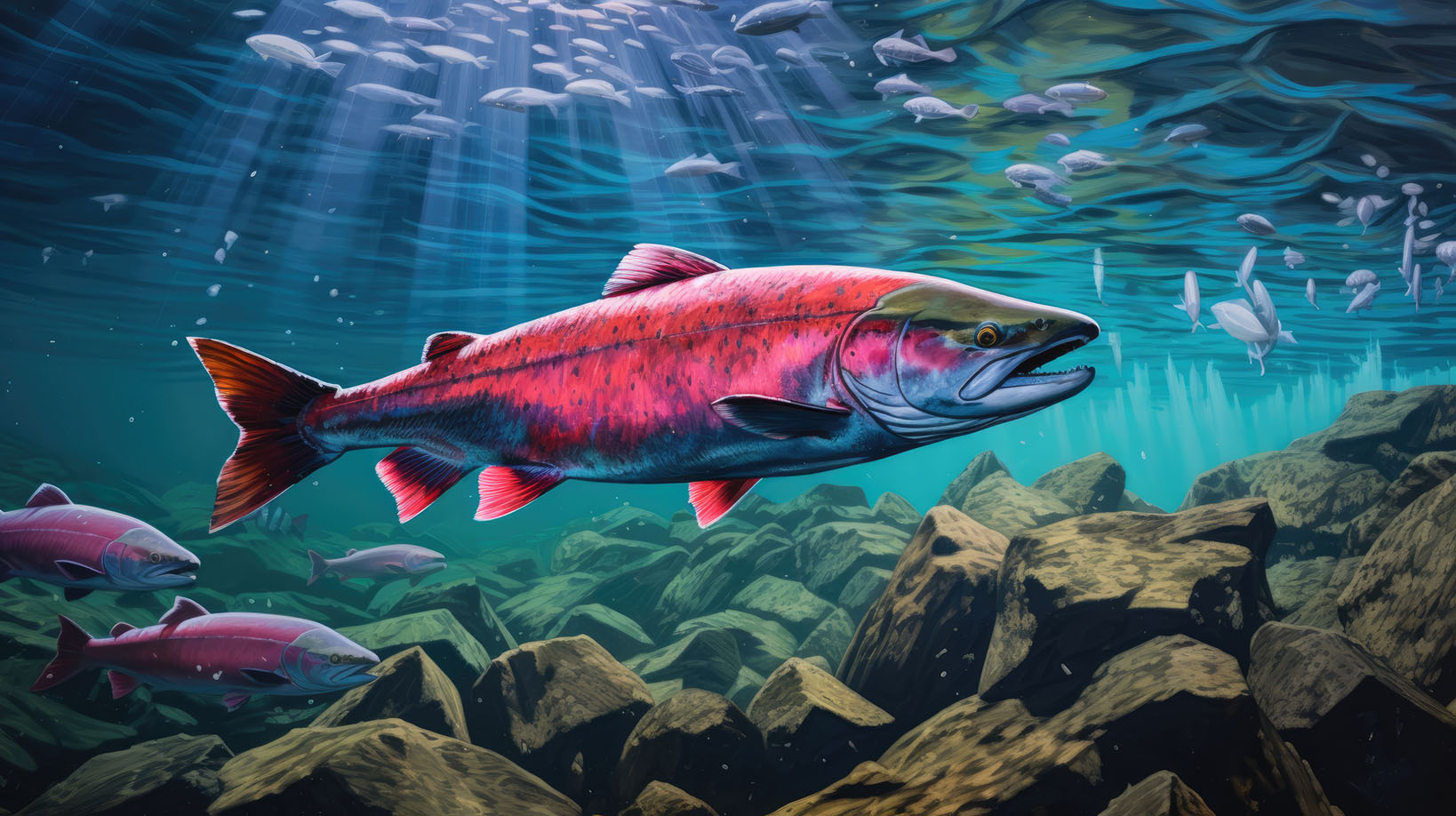Topic Sessions
Topic 1. Pacific Salmon and Steelhead Trout in a Changing North Pacific Ocean (Forward Action)
Moderators: Ed Farley (USA)
Outcome: The effects of natural environmental variability and human factors affecting salmon distribution and abundance are understood and quantified.
Climate change may result in significant variability and overall declines in the carrying capacity and usable habitat (distribution) of Pacific salmon
in the North Pacific Ocean, potentially leading to expanded use of the Arctic Ocean, at least seasonally. An improved understanding of linkages between
environmental changes and Pacific salmon production will help to plan for the economic consequences of these changes. The objectives are to understand and
quantify the effects of environmental variability and anthropogenic factors affecting salmon distribution and abundance, and to project future changes with
improved models.
Sessions
| 1-1 |
Pacific Salmon Distribution/Migration, Climate and Ocean Changes |
| 1-2 |
Pacific Salmon Density Dependence, Carrying Capacity, Climate and Ocean Changes |
| 1-3 |
Pacific Salmon Critical Periods, Climate and Ocean Changes |
| 1-4 |
Modeling the Future for Salmon |
| 1-5 |
Summary and discussion |
Topic 2. New Technologies
Moderator: Ed Farley (USA)
Outcome: New technologies and analytical methods are advanced and applied to salmon research
Novel stock and fish identification methods including new molecular techniques, hatchery mass marking, and intelligent tags continue to be developed,
and these tools are integral to comprehensive and cost-effective monitoring and mechanistic studies to facilitate the formulation of effective models predicting
the distribution and abundance of salmon populations. Although considerable progress has been made in both the basic understanding of population differentiation
of mixed marine salmonid assemblages and in genetic research technologies, this knowledge is still insufficient to understand the spatial distribution of different
populations in the ocean and the differences in their responses to changing environmental conditions. Implementing genetic methods to differentiate mixed marine
salmonid assemblages and to expand the database of reference samples are increasingly needed.
Sessions
| 2-1 |
New Tools and activities to improve salmon identification
- additional pink salmon genetic baselines
- develop and standardize Pacific salmon genetic data and analysis methods for comprehensive coastwide genetic baseline database
|
| 2-2 |
New Tools to improve an understanding of salmon marine ecology including: Genomics, eDNA, Marking, Intelligent Tags, Remote sensing/Autonomous vehicles, Tracking |
| 2-3 |
Summary and discussion |
Topic 3 (Special Session). New Results from the International Year of the Salmon Surveys
Moderator: Jackie King (Canada)
Winter is believed to be a critical period for salmon where reduced prey resources and increased competition may impact survival. One major objective for the IYS was to
conduct international collaborative research in the North Pacific Ocean during winter to help understand winter marine ecology for Pacific salmon. Two expeditions during winter 2019 and 2020
focused on Pacific salmon winter ecology in the Gulf of Alaska and initial results were discussed at a virtual conference held during April 2021. A large-scale international
research survey was conducted during winter 2022 and included four research vessels sampling from the eastern to the central North Pacific Ocean. Initial survey results were presented at the
IYS Synthesis Symposium in Vancouver, BC in October 2022. This session is intended to provide a venue for new results from ongoing analyses being conducted by international scientists.
Sessions
| 3-1 |
New results from the International Year of the Salmon Winter surveys |
| 3-2 |
Summary and discussion: overview of lessons learned for future challenges |
